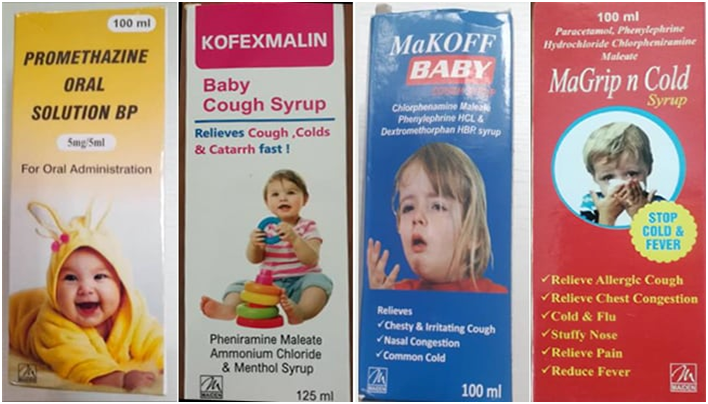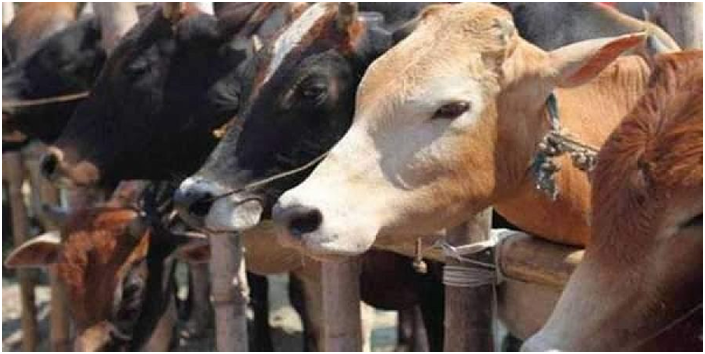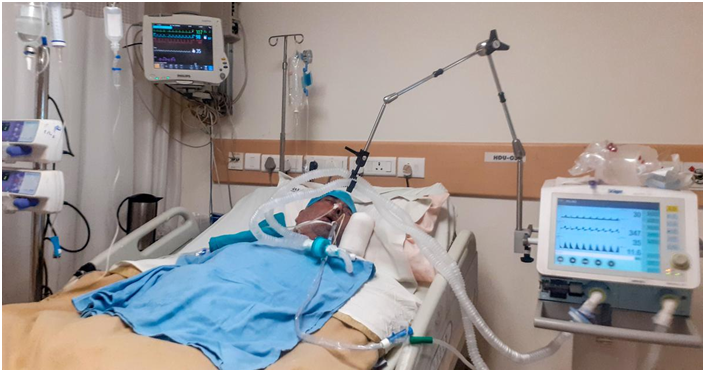The Gambia deaths and the toxic cough syrups (GS Paper 2, Health)

Why in news?
- Recently, the Gambia’s Health Minister said that the number of child deaths likely linked to contaminated cough syrups made by an Indian manufacturer had risen to 69.
What happened in the Gambia?
- In early September, health authorities in the the Gambia were investigating if there was a link between dozens of child deaths from acute kidney injuries and the consumption of a paracetamol syrup used for fever, cough, cold, and pain.
- Doctors began to witness a spike in the number of cases of severe kidney injuries in children under the age of five by late July and suspected a link with medicines.
- A number of children began to get sick with kidney problems within three to five days of consuming a paracetamol syrup sold locally. The affected would experience fever, inability to pass urine, and vomiting, followed by kidney failure.
Alert by WHO:
- The Gambia started coordinating with the World Health Organisation about the incidents and reported four locally-sold cough syrups it suspected could be linked to the injuries and deaths.
- On October 5, the WHO issued a medical alert about four substandard products— products “that fail to meet either their quality standards or specifications”.
- These were four cough syrup variants- Promethazine Oral Solution, Kofexmalin Baby Cough Syrup, Makoff Baby Cough Syrup and Magrip N Cold Syrup, whose manufacturer was stated as Maiden Pharmaceuticals Limited, Haryana, India.
- The alert added that the substandard products mentioned were unsafe and their use, especially in children, could “result in serious injury or death”.
What are the toxic chemicals found in samples tested by the WHO?
- According to the WHO, diethylene glycol and ethylene glycol are toxic to humans when consumed and can prove to be fatal.
- Both diethylene glycol and ethylene glycol are illegal adulterants that may be used as solvents in liquid medication.
- Common solvents such as glycerine (also known as glycerol) and propylene glycol are used in cough syrups to provide a liquid base to non-water-soluble paracetamol or acetaminophen; these solvents also act as preservatives, thickeners, sweeteners, and antimicrobial agents.
- Medical experts say that in order to cut expenses and due to the solubility of compounds like diethylene glycol and ethylene glycol, manufacturers may sometimes substitute it for nontoxic solvents such as glycerine or propylene glycol or comparatively cheaper commercial grade versions of these solvents which may contain diethylene glycol and ethylene glycol, potentially resulting in contamination.
Earlier instances:
Cases abroad:
- Instances of contamination and deaths linked to diethylene glycol, however, are not new. Such cases have been reported before in India, the United States, Bangladesh, Panama, and Nigeria.
- In 2007, the U.S. Food and Drug Administration (FDA) issued a guidance to pharmacy compounders, repackers, and suppliers about a potential public hazard— glycerin(e) contaminated with diethylene glycol (DEG), calling DEG a “poison”. The FDA’s advisory followed reports of fatal DEG poisoning of consumers who ingested medicinal syrups, such as cough syrup or acetaminophen syrup.
Cases in India:
- In 2021, 12 children died in Udhampur district of Jammu due to contaminated cough syrup called Coldbest-PC, manufactured by a company in Himachal Pradesh. These deaths were also linked to the presence of high levels of diethylene glycol in the cough syrup. The State’s administration later ordered the withdrawal of the drug from all the other States where it was marketed.This was the fourth case of mass glycol poisoning in India.
- In 1973, there was a similar incident at the Children’s Hospital, Egmore in Chennai that caused the deaths of 14 children. In 1986, similar poisoning at Mumbai’s J.J. Hospital caused the deaths of 14 patients who were otherwise on the path to recovery. In 1998, 33 children died in two hospitals located in New Delhi due to similar poisoning.
Ongoing probe:
- The WHO has initiated a deeper probe in coordination with Indian authorities.
- India’s Central Drugs Standard Control Organisation (CDSCO) has also launched a detailed investigation to ascertain the facts and details of the matter in collaboration with the State Drugs Controller of Haryana, the state where the manufacturer Maiden Pharmaceuticals is located.
- According to the preliminary inquiry, Maiden Pharmaceutical Limited was licensed by the State drug controller for the products under reference and held manufacturing permission for these products. The company has so far exported these four cough syrups only to the Gambia.
- According to the All India Organisation of Chemists and Distributors (AIOCD), none of the four cough syrups mentioned in the WHO’s alert was available for sale in India.
What’s next?
- Indian authorities are now waiting for the WHO to share the exact ‘one-to-one causal relation of death’ with the four medicines and the details of product labels so that they can identify the “source of the manufacturing of the products”.
- As a practice, the importing country tests the products for quality before sanctioning their usage. Gambian President has vowed, meanwhile, to boost health and safety measures including better quality control over imported medicines, ordering the creation of "a quality control national laboratory for drugs and food safety".
Grazing animals key to long-term soil carbon stability: IISc study
(GS Paper 3, Environment)
Why in news?
- A study recent carried out by researchers at the Centre for Ecological Sciences (CES) and the Divecha Centre for Climate Change (DCCC), IISc, has revealed that grazing animals hold the key to long-term soil carbon stability.

Key Observations:
- The 16-year-long study states that large mammalian herbivores like the Yak and Ibex play a crucial role in stabilising the pool of soil carbon in grazing ecosystems such as the Spiti region in the Himalayas.
- Experimental removal of grazing by herbivores from such ecosystems was found to increase the fluctuations in the level of soil carbon, which can have unintended negative consequences for the global carbon cycle.
Reliable sink:
- The soil pool is a reliable sink for trapping carbon. Maintaining stable levels of carbon in the soil is therefore key to offsetting the effects of climate change.
- Since soil contains more carbon than all plants and the atmosphere combined, it is important to ensure its persistence. When plants and animals die, dead organic matter remains in the soil for a long duration before microbes break it down and release carbon into the atmosphere as carbon dioxide.
Fluctuations in soil carbon:
- From one year to the next, soil carbon was found to fluctuate 30-40% more in the fenced plots where animals were absent, compared to the grazed plots where it remained more stable each year. A key factor underlying these fluctuations was nitrogen.
- Depending on the soil conditions, nitrogen can either stabilise or destabilise the carbon pool. Grazing by herbivores, however, changes their interactions in ways that tip the balance in favour of the former.
- Many previous studies have focused on measuring carbon and nitrogen levels at long time intervals, assuming that the accumulation or loss of carbon is a slow process but the interannual fluctuations they noticed in their data paint a very different picture.
- These fluctuations can be consequential for climate as they are linked to how large mammalian herbivores influence soil.
Way Forward:
- As grazing ecosystems make up about 40% of the Earth’s land surface, protecting the herbivores that keep the soil carbon stable should remain a key priority for mitigating climate change.
Should governments regulate private hospitals?
(GS Paper 2, Health)
Context:
- In July, the Competition Commission of India (CCI) released its report on the pricing practices of 12 corporate hospitals.
- Though not surprising that these hospital chains were overcharging patients, what drew peoples’ attention was that for the first time an audit of sorts was carried by an arm of the government with powers to penalise ‘wrongful’ gains.
- It was a report long overdue, and so welcomed by citizens struggling with the issue of exploitative prices without accountability to outcomes or ethical considerations.
- This then raises the issue whether it is time for government to regulate the pricing of services charged by private hospitals with the attendant question of should it, and can it.

Theory for Government Intervention:
- Asymmetry of information that creates an unequal power structure between care providers and patients is a typical characteristic of the health sector, providing a compelling argument for government intervention.
- It is basic economics that tells that perfect competition and markets can only function when there are certain conditions such as perfect knowledge between suppliers and buyers, and no barriers to entry among others.
- Therefore, since health is not amenable to the fair allocation of resources between competing interests, it quickly slips into exploitation and exclusivity, unless controlled. This then sets the stage for the entry of the State.
Pricing of Services & State Intervention:
- There are three ways in which pricing of health services are arrived at — administered as in Japan, negotiated as in those countries with social insurance, or markets forces influenced by the capacity to pay.
- Where the government owns the hospitals and/or is the monopoly purchaser of all health services such as in Japan or largely in the United Kingdom, prices are fixed for every item and procedure, leaving no scope or incentives for care providers to overcharge or provide excessive or unnecessary services.
- So, while in Japan, private players provide all services at administered prices as per the schedule of benefits that is available with all citizens, in the UK too the GP, a private practitioner, provides comprehensive primary healthcare services as per a contract to serve a defined population a package of services at prices negotiated with government.
Free For All:
- The situation gets complex when the health markets have no regulations, government oversight is weak, or non-existent, and providers have the freedom to practice and charge in any manner.
- In such situations, making profits and increasing incomes is the bottom line. Prices in such a fee for service environment are then calibrated by the purchasing capacity of the clientele, out of pocket or through third party,either way being inflationary.
- Even so, in certain situations, and depending on the acute vulnerability and desperation of patients, the private sector can become intensely exploitative as we witnessed during the Delta phase of the pandemic in 2021, when patients are estimated to have spent huge amounts out of pocket within that short period.
- The revenue centres for private hospitals are diagnostics, drugs, and consumables. Most resort to differential pricing, often charging double the amounts for every drug, consumable or procedure in the ICU, providing the incentive to increase ICU admissions.
Governments intervene in health markets in two ways:
- through financial instruments such as purchasing power and incentives and disincentives, impacting demand and supply side behaviour, and
- through a set of laws, rules, regulations and guidelines.
- The mode of payment such as fee for service, reimbursement, third-party payment, capitation fees, co-payments, and so on, influence both the health seeking behaviour and provisioning of services.
- For example, providing subsidies or higher reimbursement amounts for a particular procedure by government or an insurance agency can result in more of those services being performed by the doctors.
Clinical Establishment Act of 2010:
- While the United States, European countries, etc. all have a plethora of regulations to check unethical or exploitative practices, India has been laggard.
- The first and only attempt of the Union and some state governments has been the Clinical Establishment Act of 2010 that requires providers to register themselves and provide information of what services are being offered, and at what price. Barely 11 states have enacted these regulations, and only one or two attempted to enforce it.
- The utter incapability and incompetence of the government to enforce its own laws is on account of two factors. One, the pressure of the medical profession resisting any form of regulation, and oversight. Two, the lack of a supervisory system manned by well-trained personnel, and capacity to inspect, investigate, and identify deliberate wrongdoing from genuine errors.
Recommendations in case of India:
- While it is necessary for the government to build its regulatory capacity, there is also an equally urgent need to build an effective grievance redress system that India sorely lacks.
- The system of justice, be it the courts, the Medical Council of India, or consumer protection agencies, are plagued with inordinate delays, ridiculously low penalties, and multiple avenues of relief available, making a mockery of grievance redress.
- With such lackadaisical enforcement of even mild punishment, disciplining of care providers and institutions to be accountable is a challenge. With rapid increases in costs, increasing complaints of maltreatment, wrong diagnosis, negligence or medical errors, safety is emerging as a major issue.
- So even while the governments need to bring in laws, they also need to build a culture of supportive, respectful, and facilitating supervisory styles. This would require the inspectors/officials to be trained, and also made accountable for unacceptably overbearing or arrogant behaviour.
Conclusion:
Building value-based and non-adversarial work environments in the health sector is critical since all stakeholders have in the ultimate analysis one primary goal, the benefit of the patients, and their well-being as all are dependent on each other, and cannot do without the other.




